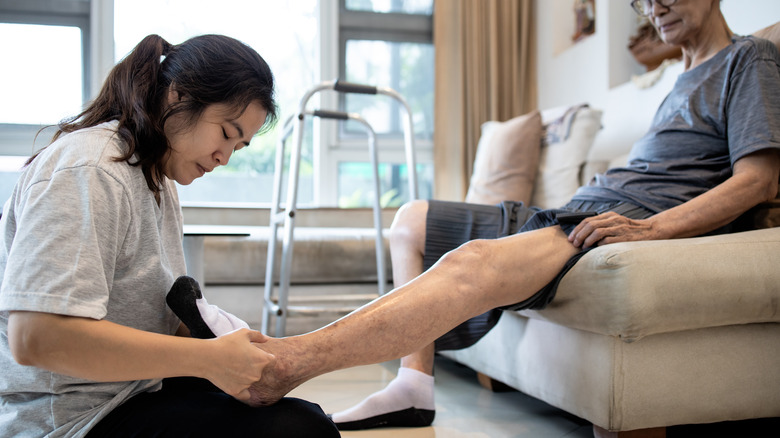Two Easy Ways To Self-Assess Your Circulation
If you've ever had cold fingers, tingling in your toes, or numbness in your limbs, your circulation might not be the greatest (via Healthline). Blood flow is important, but sometimes poor circulation just feels inevitable — but how can we really know? As it turns out, you can check your body's circulation at home with two simple steps.
The blood circulatory system works together with the cardiovascular system and is responsible for pumping blood throughout the body (via Healthline). Oxygen enters the bloodstream through membranes in the lungs that take in oxygen as we inhale. The heart pumps the blood, carrying the oxygen and nutrients through the arteries to ensure the body functions properly. This creates carbon dioxide, which we eliminate from the body by exhaling. The veins then carry the blood back to the heart.
If you have poor circulation, something in this process doesn't quite work right. If there is something getting in the way of the blood passing through, like plaque in the arteries or narrowed blood vessels, cells don't get enough oxygen and can't function properly (via Cleveland Clinic). This can often affect parts of the body furthest from the heart, like the hands and feet. Poor circulation is more likely to affect those who are over 40, overweight, have diabetes, or don't get much exercise.
How to check your circulation right now
It's easy to check your circulation at the doctor's office through tests like an angiogram, which is an X-ray of your blood vessels (via MindBodyGreen). However, according to physician and vascular biologist Dr. William Li, there are also two simple ways you can also check your circulation at home.
The first is by looking at your eyes. Pull back gently on your eyelid and look at the whites of your eyes. The blood vessels are visible here, so if they look broken, it may mean that your circulation is poor. However, broken blood vessels can be common and don't always mean something is wrong, so this is just a starting point.
You can also check your circulation by pressing on your skin and noticing the skin tone. If you press down firmly on your skin, the color should drain from it as blood is cut off from the area. After you lift up, the blood should rush back in, returning the color. If it takes more than a second or two for the color to return, you may have circulatory issues.


